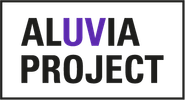The ALUVia project consortium partners are:
- University of Twente (UT)
The University of Twente is involved in the project with the Integrated Optical Systems (IOS) group, led by prof. S.M. García-Blanco. The IOS group has a solid proof record on the development of novel materials, integration technologies, and devices to solve societal problems. These material platforms are ultra-broadband and low loss, enabling applications from the ultraviolet to the mid infrared. The Al2O3-on-SiO2 integrated photonic platform developed in the IOS group will be a key enabling technology for applications operating in the UV wavelength range.
In the ALUVia project, the IOS group will be working on the maturation of the Al2O3-on-SiO2 integrated photonic platform. Specifically, the IOS Group will develop a stable, high-yield, nanofabrication process that delivers ultra-low propagation loss waveguides operating in the 200-400 nm wavelength range.
Website: https://www.utwente.nl/en/tnw/ios/
- InSpek (ISK)
InSpek is a start-up company developing chemical monitoring solutions based on integrated photonics. By providing chipscale sensors that are cheaper, smaller, and more sensitive than the currently available free-space optical sensors, InSpek aims to improve the understanding of biochemical processes, enable their optimization, and ultimately increase their yield. The company is located in the Paris-Saclay research hub, south of Paris, France.
InSpek will demonstrate an application of the alumina platform developed in ALUVia, namely UV waveguide-enhanced Raman spectroscopy. This demonstration will build upon InSpek’s expertise in the design and testing of integrated Raman sensors. In close collaboration with the other partners, InSpek will work to design, package, and characterize PICs, all the way to the measurement of commercially relevant biochemical samples. InSpek’s work with the alumina PICs will serve as an example of the commercial potential of the technology.
Website: https://www.inspek-solutions.com/
- ETH Zürich (ETH)
The Trapped-Ion Group at ETH Zürich performs research on quantum computing with individual ions. They are pioneers of multiple aspects of quantum error correction in this platform, as well as being the first group to perform entangling operations using chips with integrated optics. The work of the group has been recognised with a number of awards, including the Landauer-Bennett award of the APS.
Within the ALUVia project, the Trapped-Ion Group will contribute designs for ion trap chips for quantum computing purposes. The group will specify photonics components to be fabricated within the ALUVia consortium and also test chips produced by other partners.
Website: https://tiqi.ethz.ch/

